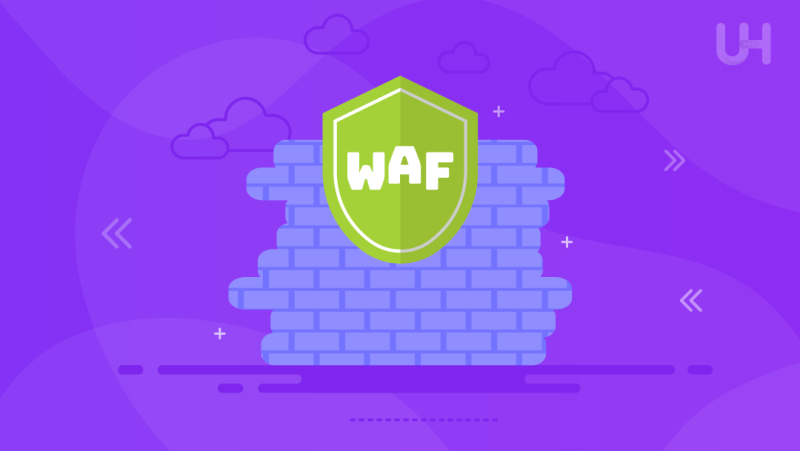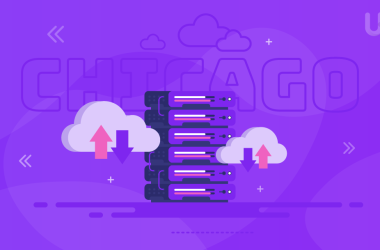A Web Application Firewall (WAF) is a crucial security tool that protects web applications from cyber threats. It acts as a barrier between users and web servers, filtering and blocking malicious traffic. With the increasing reliance on web applications, the importance of WAF in ensuring online security cannot be overstated.
In this blog, we’ll introduce WAF to beginners and provide a clear understanding of its role and significance in protecting web applications.
Understanding Web Application Security
Web applications are software programs or services accessed via web browsers over the internet. They enable users to perform various tasks such as online banking, social media interaction, e-commerce transactions, and more. Unlike traditional desktop applications, web applications operate on remote servers and are accessed through URLs.
Given the nature of web application vulnerabilities, specialized security measures are essential to protect against potential threats. Traditional network security measures like firewalls and antivirus software cannot effectively protect web applications. Hence, the need for security measures like Web Application Firewalls (WAFs) arises. WAFs are specifically designed to monitor, filter, and block malicious traffic targeting web applications. It also provides an additional layer of defense against cyber threats.
What is a Web Application Firewall (WAF)?
A Web Application Firewall (WAF) is a security solution to protect web applications from various cyber threats and attacks. It acts as a shield between web servers like virtual private servers and users, monitoring and filtering incoming and outgoing traffic to ensure only legitimate requests are processed.
The primary function of a WAF is to analyze HTTP traffic and apply predefined security rules to detect and block potential threats in real time. A WAF can identify malicious behavior and prevent unauthorized access, data breaches, and other malicious activities targeting web applications by inspecting parameters such as URL paths, query strings, HTTP headers, and request methods.
How does WAF Work?
WAF intercepts HTTP requests and responses between clients and web servers like virtual dedicated servers. It inspects each request against a set of predefined security rules, which may include signatures, patterns, or behavioral analysis techniques. When a request matches a security rule or exhibits suspicious behavior, the WAF takes appropriate actions to mitigate the threat, such as blocking the request, redirecting it to a different URL, or generating alerts for further investigation.
Additionally, modern WAFs may incorporate advanced features such as machine learning algorithms and threat intelligence to dynamically adapt to evolving threats and provide more effective protection for web applications. Organizations also implement firewall management protocols to ensure that rules and policies are aligned with the threat current landscape.
Ready to Secure Your Web Applications?
Protect your web applications from cyber threats with Ultahost’s Cloudflare VPS hosting. Deploy a Web Application Firewall (WAF) and ensure the security and availability of your online assets.
Types of WAF
Web Application Firewalls (WAFs) come in various types, each offering unique implementation and operational characteristics tailored to different organizational needs. Here’s a detailed exploration of the types of WAFs:
Network-based WAF
Network-based WAFs are deployed at the network perimeter, acting as a gateway between external users and the web server. They intercept and inspect incoming web traffic before it reaches the web server, allowing organizations to filter out malicious requests and prevent potential threats from reaching the application layer.
Typically deployed as hardware appliances or virtual appliances integrated into the network infrastructure, network-based WAFs provide centralized protection for all web applications hosted within the organization’s network. They offer scalability and high throughput, making them suitable for organizations with large volumes of web traffic and diverse application environments.
Network-based WAFs are ideal for organizations seeking comprehensive protection at the network level. They ensure that all incoming traffic is inspected and filtered before reaching the web server, thereby reducing the attack surface and minimizing the risk of exploitation.
Host-based WAF
Unlike network-based WAFs, which operate at the network perimeter, host-based WAFs offer granular control and visibility into application-specific traffic, allowing organizations to apply security policies tailored to individual applications.
By residing on the same server as the web application, host-based WAFs can inspect and filter traffic at the application layer in real time, detecting and blocking malicious requests before they reach the web server. However, host-based WAFs may introduce additional overhead on the server and require careful configuration to avoid performance impacts.
Host-based WAFs are for organizations with specific application security requirements or regulatory compliance mandates. Also, providing dedicated protection for critical or sensitive web applications hosted on individual servers.
Cloud-based WAF
Cloud-based WAFs are hosted and managed by third-party service providers in the cloud. They offer scalable and cost-effective security protection for web applications without requiring on-premises hardware or software deployment. The provider uses its global infrastructure and security expertise to deliver comprehensive protection against malware attacks.
Organizations can reduce the operational burden on their Cloudflare VPS by offloading the management and maintenance of WAF infrastructure to the service provider. Cloud-based WAFs offer scalability, flexibility, and ease of installation, making them particularly suitable for organizations with distributed or cloud-native application architectures.
Cloud-based WAFs provide centralized management and monitoring capabilities, enabling organizations to enforce consistent security policies across all web applications and maintain visibility into security events and incidents. Additionally, they offer pay-as-you-go pricing models, allowing organizations to scale resources based on demand and optimize costs.
Benefits of WAF
Using a Web Application Firewall (WAF) offers many benefits that contribute to strengthening an organization’s overall cybersecurity and protecting its web applications. Here’s a detailed exploration of the advantages:
Enhanced Security Posture
A WAF acts as a proactive defense mechanism, continuously monitoring and filtering web traffic to identify and block malicious requests in real time. By enforcing strict security policies and access controls, WAFs prevent unauthorized access to web applications, reducing the risk of data breaches, identity theft, and other cyber threats.
Additionally, WAFs provide granular control over web traffic, allowing organizations to customize security rules based on specific application requirements. This level of customization enables organizations to mitigate potential vulnerabilities and protect sensitive data from unauthorized access or exploitation.
Furthermore, WAFs offer visibility into web traffic patterns and security incidents, allowing organizations to monitor and analyze potential threats effectively. By identifying and addressing security issues, organizations can defend against cyber attacks. Ultimately, minimize the impact of security breaches on their operations and reputation.
Protection Against Common Web Application Attacks
Due to their widespread use and limitations, web applications are prime targets for cyber attacks. WAFs provide comprehensive protection against a wide range of common web application attacks, including but not limited to:
SQL Injection (SQLi): WAFs inspect incoming SQL queries to prevent attackers from manipulating databases through malicious input.
Cross-Site Scripting (XSS): WAFs detect and block attempts to inject malicious scripts into web pages. Also, preventing unauthorized access to sensitive information or hijacking of user sessions.
Cross-Site Request Forgery (CSRF): WAFs verify the integrity of requests to ensure they originate from legitimate users. Moreover, preventing attackers from executing unauthorized actions on behalf of users.
Distributed Denial of Service (DDoS) Attacks: WAFs lessen DDoS attacks by rate-limiting and filtering incoming traffic. They ensure web applications remain available during high-traffic or malicious activity periods.
By reducing these common attacks, WAFs help organizations protect data privacy, integrity, and availability of critical business resources.
Compliance with Industry Standards and Regulations
Many industries and regulatory frameworks require organizations to implement adequate security measures. It is to protect sensitive data and ensure compliance with industry standards and regulations. WAFs play a crucial role in helping organizations meet these requirements by providing a robust security solution.
WAFs offer features and capabilities that align with regulatory mandates, such as the Payment Card Industry Data Security Standard (PCI DSS), Health Insurance Portability and Accountability Act (HIPAA), General Data Protection Regulation (GDPR), and more. With these security controls by regulatory authorities, organizations can ensure compliance with industry standards and protect their business interests.
Additionally, WAFs provide audit trails, logging, and reporting capabilities that facilitate compliance monitoring and reporting. They allow organizations to demonstrate compliance with regulatory requirements and industry standards during audits and assessments.
Conclusion
In conclusion, Web Application Firewalls (WAFs) are essential for protecting web applications from cyber threats. They enhance security, prevent common attacks, and ensure compliance by serving as a barrier between servers and users. Choosing the right WAF involves considering implementation options, integration capabilities, and performance.
As you work to keep your websites safe, remember that security is something you need to monitor constantly. With Ultahost’s DDoS-protected VPS hosting, you can ensure that your websites stay safe from cyberattacks and continue running smoothly for your visitors. Don’t let anything mess with your business—make sure you have strong security in place!
FAQ
What is a Web Application Firewall (WAF)?
A Web Application Firewall (WAF) is a security solution designed to protect web applications from various cyber threats and attacks. You need a WAF to safeguard your web applications from common vulnerabilities.
How does a WAF work?
A WAF works by intercepting and inspecting HTTP traffic between users and web servers. It analyzes incoming requests and outgoing responses, applying predefined security rules to detect and block malicious traffic.
What types of attacks can a WAF protect against?
A WAF can protect against a wide range of cyber attacks targeting web applications, including but not limited to SQL injection, cross-site scripting (XSS), cross-site request forgery (CSRF), remote file inclusion (RFI), directory traversal, command injection, session hijacking, and brute force attacks.
How do I choose the right WAF solution for my organization?
When choosing a WAF solution, consider factors such as deployment flexibility, integration capabilities, performance, scalability, and vendor support.











